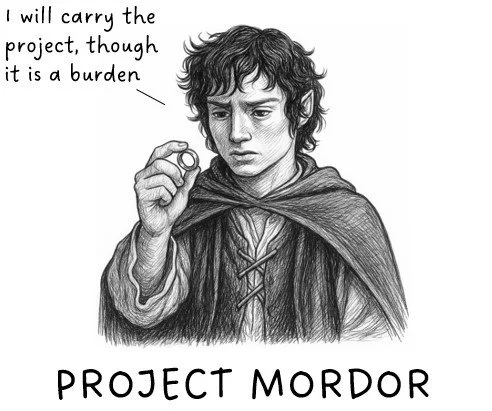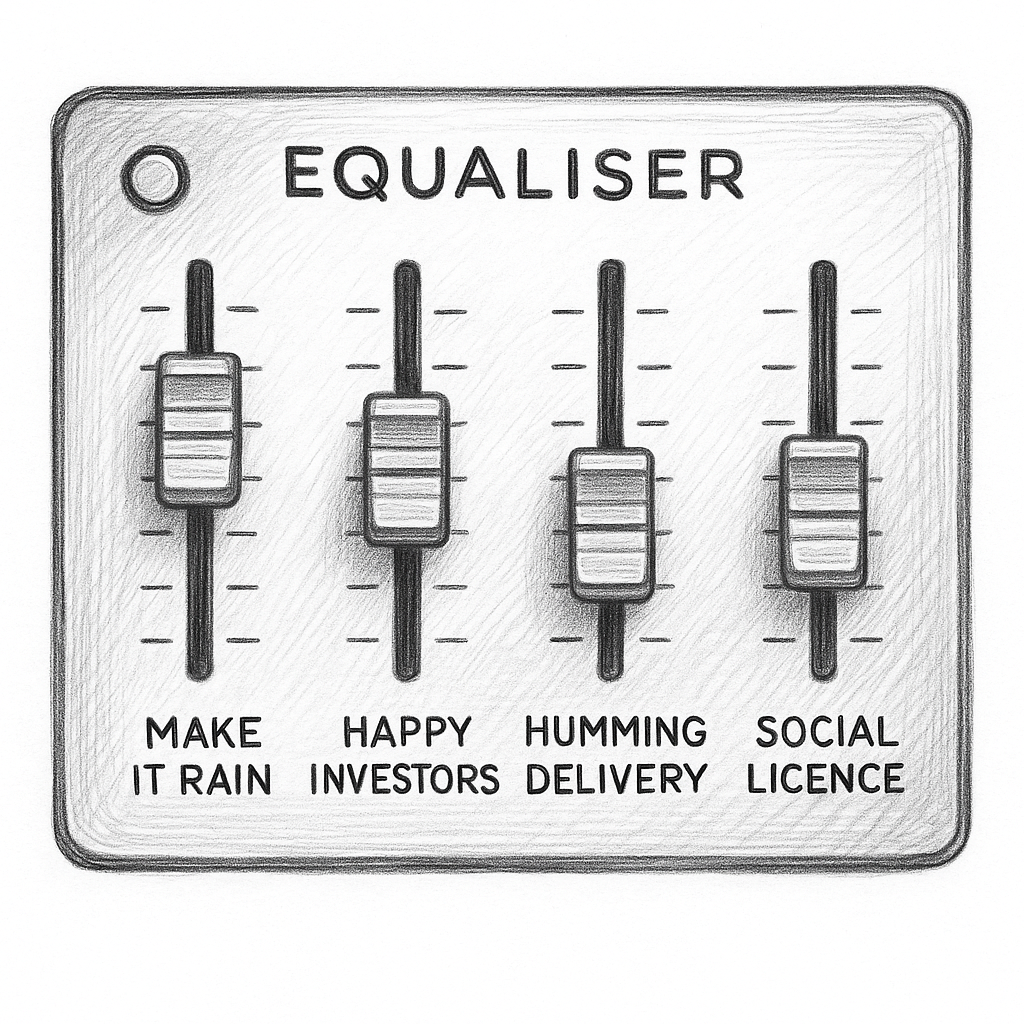The four levers to keep projects moving
If projects were judged on ambition alone, most would be winners
Ambition doesn’t design great execution or keep things on track. More often, projects run into strife because of avoidable potholes: shaky funding, risk aversion, dodging hard decisions, backside covering, missing skills or processes, or communities that feel overlooked.
Even under strong leadership, complex work wobbles. Good people make hasty calls, pull back when the pressure’s on, or just get stuck. It’s human and it doesn’t matter where you sit: government, business, or community sector, the patterns are the same. At the end of the day, business is just a complex system of human interactions. The titles change, the logos change, but the dynamics don’t.
That’s why the best time to get the levers working is at the start, before the dust kicks up. The second-best time is when things are going sideways.
The souvenir problem
A common mistake is over-focusing on the activities that create the outcome - the technical stuff we have to grind through. Crucial, yes, but not the point. That focus makes us miss the ‘why’ of the project, the heart, which for reasons I’ll never understand is so often treated as optional, administrative, or fluffy. In reality, the ‘why’ matters most. It’s the shortcut to understanding every interest at play, and the only true line of sight into the controlling forces on your project. It’s your best project hack, because from here you can diagnose issues early and stay fully in tune with your mission.
The trap is treating this work (e.g. business case, stakeholder engagement plan, funding strategy, website, product strategy) like a one-off thing. Do it once, write it down, file it away, and suddenly it becomes a souvenir: something that looks good on the shelf for auditors but has no practical use. And souvenirs are dangerous, because they create the illusion of progress. A box was ticked, a plan was drafted, and everyone moves on to the next issue.
The world doesn’t sit still. Stakeholders drift, funding cycles change, community sentiment shifts. That’s normal and should be expected. But if you’re not listening, iterating, and adjusting - even in the uncomfortable spots like team make-up or leadership - uncertainty builds. And sooner or later, tough questions get asked.
So let’s unwring those hands and get them on some useful levers.
My life as a stereo equaliser
No matter the industry or sector, there are four levers I pull to keep projects well-tuned. Permit me another metaphor: picture a little stereo equaliser. Instead of treble and bass, the sliders are labelled:
Make it rain - secure the funding and approvals so the idea looks investable.
Happy investors - keep the money people confident and supportive, not blockers.
Humming delivery - create clarity, rhythm and governance so things don’t drift.
Social license - build trust so communities back the project instead of resisting it.
The important bit is that you don’t set these levers once and walk away — because London Grime sounds super different to K-Pop. Which is to say, projects need constant adjusting and course correction to keep pace with the people who can either speed you up or slow you down.
How to hold a tune
Lever-adjustment is complicated, and it takes skill and experience. If you’re tempted to wait it out, remember that expecting more from people than they can give is a recipe for frustration. The smarter path is to teach, build capability, and create the conditions for them to do more next time.
So if the warning signs from the start sound familiar – shaky funding, risk-aversion, avoidance, backside covering, stretched teams or cranky communities – it’s time to take action.
My next article drops Tuesday 16 September 2025: Pulling the first lever — Make it rain. Because good ideas don’t fund themselves.

